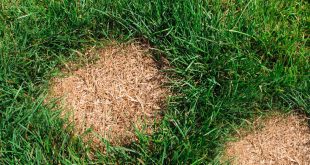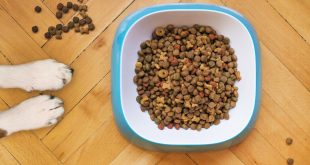This post may contain affiliate links. Please read our disclosure.
Are you looking for the ultimate guide on how much wet food to feed a dog? Whether it’s a new puppy or an older dog, we’ll show you just what and how much of the good stuff is required. With our helpful tips and tricks, your canine companion will be perfectly nourished. Let’s get started!
Article Contents
How Much Wet Food to Feed a Dog?
Feeding your pup can be a tricky task – especially when it comes to wet food. Many dog owners struggle with the question of how much wet food they should give their beloved pet. To make sure you are providing the best nutrition for your pooch, there are some things you need to consider when determining how much wet food is right for them.
The first thing that needs to be taken into account is your pup’s size and breed. Smaller dogs have smaller stomachs and require less food than larger breeds; similarly, certain breeds may require more or less depending on metabolism rates and other factors associated with body types. It’s important that you research what type of diet would work best for your specific dog so that they’re getting all the nutrients they need without overfeeding them or leaving them feeling unsatisfied after meals.
In general, most adult dogs will do well eating 1-2 cups of high quality canned dog food per day divided into two meals (breakfast & dinner). If this amount leaves your pup feeling hungry in between meals, try adding some healthy snacks like carrots or apples as part of their routine! Puppies usually require slightly more than adults but still should not exceed 2 cups per mealtime – remember to adjust amounts accordingly depending on breed/size/age! Lastly, don’t forget about hydration: always provide plenty of clean water alongside any wet food dishes so that Fido stays nice and hydrated throughout the day!
Benefits of Wet Dog Food
When it comes to feeding our beloved four-legged friends, there are many options available. Wet dog food is one of the most popular choices and has a multitude of benefits that make it a great choice for your canine companion.
One big advantage of wet dog food is its superior taste. The flavor profile of wet food tends to be much more appetizing than dry kibble, making meal time an enjoyable experience for both you and your pup! Wet food also contains more moisture than dry varieties which can help keep your pet hydrated throughout the day, especially in hot weather when water intake might be decreased due to high temperatures. Additionally, because wet foods have higher water content they tend to fill up dogs faster so you don’t need as much per serving compared with other types of pet foods which means fewer trips to the store for refills. Dogs can also sometimes have an easier time digesting wet dog food over the regular, hard dry food.
Wet dog food also offers nutritional advantages over some other varieties like dry kibble or canned meats. Canned meats are typically very high in fat with little nutritional value while some types of kibble contain preservatives or additives that may not benefit your pet’s diet in any meaningful way; thus leaving them lacking essential vitamins and minerals necessary for optimal health. On the other hand, wet dog foods generally include fresh ingredients such as meat proteins, vegetables and carbohydrates providing a well rounded source of nutrition without having to worry about added sugars or chemicals often found in processed meals. Furthermore because these products typically require refrigeration after opening they must meet strict safety standards set by regulatory bodies ensuring only quality ingredients get used in their production process – giving owners peace of mind knowing their pets are eating safe meals every single day!
For example:
• Superior taste
• Higher water content
• Fills up dogs faster
• Fresh ingredients including proteins, vegetables & carbohydrates
• No added sugars/chemicals
• Refrigeration required after opening
Selecting a Quality Brand of Wet Dog Food
If you’re a proud dog parent, selecting the right type of wet dog food for your furry companion can be quite a challenge. With so many brands to choose from, it can become overwhelming trying to figure out which one is best for your pup. It’s important to remember that quality should come first when making this decision and not just price or convenience.
When looking at different wet dog food brands, there are several key factors to consider in order to ensure you’re getting the most nutritious options on the market – with good-quality ingredients being top priority. Start by checking out the label on each product and see what specific proteins are included; these will provide essential nutrients like amino acids necessary for their diet. Also make sure there aren’t any artificial flavors or preservatives as these could potentially harm your pet over time if consumed frequently.
Another factor is how much fat content is present in each serving; look for products that contain healthy fats such as Omega 3 fatty acids which help support brain development and keep skin hydrated & shiny! Finally, try comparing nutritional value between brands – some may have higher levels of vitamins/minerals than others so be sure you’re giving your pup all they need in order to stay happy & healthy!
Factors Affecting Portion Size for Wet Dog Food
Portion size for wet dog food is an important factor to consider when feeding your pup. Many owners overlook the fact that it can influence their pet’s health, development, and well-being. The right portion size depends on a range of factors and these should be taken into account when deciding how much wet dog food to feed your pooch.
The age of your canine companion is one major factor in determining portion size – puppies will require more frequent meals than older dogs who need fewer but larger feeds per day. Your pup’s breed also plays a role as certain breeds have unique dietary needs (such as small breeds needing smaller portions). Additionally, activity levels are important; active pups will burn off energy faster so may need larger portions or additional snacks throughout the day. Lastly, if you have multiple pets sharing the same bowl then it’s important to ensure each animal has enough food which could mean increasing the overall amount served at meal times.
In summary:
• Age of the Dog – Puppies vs Older Dogs
• Breed – Small Breeds Require Less Food
• Activity Levels – Active Pups Need More Food
• Multiple Pets Sharing One Bowl – Increase Amount Served
Adjustments for Wet Dog Food for Different Age Groups
Wet dog food can provide a great nutritional boost for canine companions of all ages, but there are certain adjustments that need to be made based on their age. Puppies, adult dogs, and senior dogs all require different levels of protein and fat in order to thrive. Here is an overview of the ways wet dog food should vary depending on your pet’s age:
Puppies: As puppies grow they need more calories to fuel their development than adult dogs do. Look for puppy-formulated wet dog foods with at least 30% protein; this will support healthy growth as well as immune system development. Also look for DHA in the ingredients list; it helps puppies learn quickly and stay sharp throughout life!
Adult Dogs: Once a pup reaches adulthood their caloric needs begin to level out. Adult formulas typically contain 18% – 25% protein which is enough nutrition without having too much excess energy from extra carbohydrates or fats that could lead to weight gain. Make sure you keep an eye on portion sizes though; adults may still have some growing left ahead so make sure not to overfeed them!
Senior Dogs: Once your pup has reached his golden years he will likely become less active and therefore require fewer calories than when he was younger. Senior formulae usually contain around 12% – 22% protein which is just enough while keeping calorie content low so your old pal doesn’t pack on those extra pounds by accident! Additionally, look for added glucosamine and chondroitin sulfate which helps keep joints healthy even into advanced age!
Transitioning from Dry to Canned Food for Dogs
Switching from dry to canned food for your dog can be a daunting task. After all, you want to make sure that the food is nutritionally balanced and that your pup enjoys their mealtime! But with just a few simple steps, you can transition them over without any fuss or problems.
First of all, it’s important to do some research on which type of canned food would best suit your pet. Consider factors such as ingredients, price range and brand reputation before making your decision. Once you’ve chosen the right product for your pup, take things slowly by mixing it in with their current diet until they become accustomed to the new flavour and texture. Start off with small amounts so that they get used to eating something different gradually rather than being overwhelmed by a sudden change in their routine.
You may also find it helpful to mix wet and dry foods together – this way they will still have familiar flavours while getting used to something new at the same time. Additionally, adding warm water or broth can help give extra moisture and flavour if needed along with encouraging them not only smell but taste test what’s on offer first! Finally remember that although transitioning from dry kibble may seem like quite an undertaking initially; taking things one step at a time should make for an easy switchover overall!
Monitoring Your Dog’s Health and Weight
Having a healthy and fit pet is important not just for their longevity but also for their overall quality of life. As the owner, you are responsible for monitoring your dog’s health and weight. To ensure that your pet remains in tip-top condition, it is important to take note of any changes in behavior or physical appearance.
Observe how much food and water intake your pup has on a daily basis as well as keep track of their exercise regimen. If there are changes when it comes to these activities then be sure to consult with a veterinarian right away. Additionally, weigh them regularly and use this number as a benchmark when keeping tabs on any fluctuations in size over time. It can help identify if there may be underlying issues such as an improper diet or lack of activity that could potentially lead to obesity later down the line if left unchecked.
You should also pay attention to any signs that could indicate potential medical problems including excessive panting, limping, vomiting or diarrhea – all which warrant immediate veterinary attention before they worsen into more serious conditions. Make sure vaccinations are up-to-date according to guidelines set by your vet since this helps prevent dogs from catching diseases like Parvo or Rabies which can cause irreparable harm if contracted early enough! Lastly, arrange regular checkups so they may receive appropriate care tailored specifically towards their individual needs throughout each stage of life’s journey together!
Wrap up!
In conclusion, the best way to feed your pup wet food is to select a quality brand and adjust portion size for different age groups. It is important to transition from dry food slowly and monitor your dog’s health and weight. Although there are benefits of wet dog food, it may not be right for every pup; so make sure you research what works best for them! With proper care and attention, your furry friend will stay happy and healthy.
FAQ on Feeding Wet Food to Dogs
How much wet food to feed a dog?
The amount of wet food to feed a dog depends on the size, age, activity level and breed of your pup. Generally speaking, it’s best to follow the directions on the back of the product label for feeding instructions.
What type of wet food is best for dogs?
When choosing a wet food for your pup, look for one that is specifically formulated with high-quality ingredients like real meat or fish as its first ingredient. Additionally, make sure it is free from artificial colors and preservatives.
How often should I feed my dog wet food?
It’s important to create a consistent feeding schedule based on your pet’s dietary needs. As a general guideline, you can offer adult dogs two or three meals per day while puppies may need four meals per day spaced out evenly throughout the day.
Should I mix dry and wet food together?
Mixing dry and wet foods together can provide some nutritional benefits since each type has different nutrients that could benefit your pup’s health; However if done improperly this could lead to an unbalanced diet which could be harmful so it’s always best to consult with your veterinarian before making any changes in their diet.
Can senior dogs eat just wet food?
Some senior pups may benefit from eating only canned/wet foods due to dental issues or difficulty chewing; however whether this option is appropriate will depend on individual factors such as size and activity level so consulting with a vet about what would be ideal for them is recommended
 Petnile Comprehensive Pet Care Guides
Petnile Comprehensive Pet Care Guides



